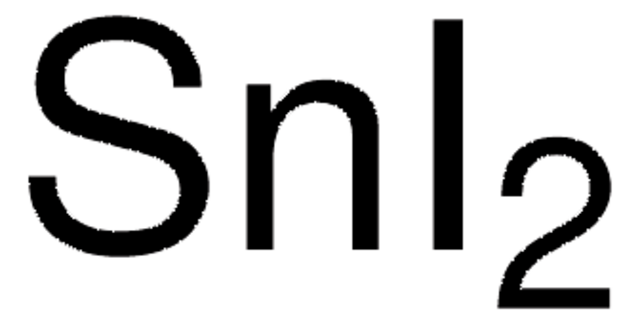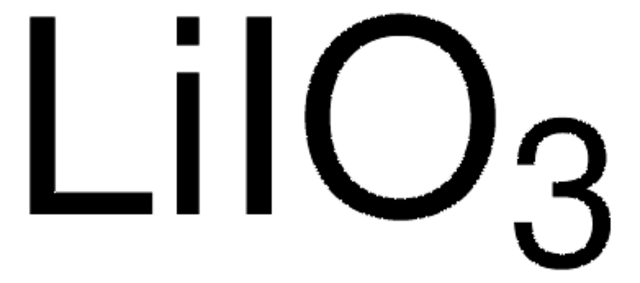518018
Lithium iodide
99.9% trace metals basis
Sinonimo/i:
Lithium(1+)iodide
About This Item
Prodotti consigliati
Livello qualitativo
Saggio
99.9% trace metals basis
Forma fisica
powder
Caratteristiche più verdi
Design for Energy Efficiency
Learn more about the Principles of Green Chemistry.
sustainability
Greener Alternative Product
Impurezze
≤1500.0 ppm Trace Metal Analysis
Punto di fusione
446 °C (lit.)
Densità
3.49 g/mL at 25 °C (lit.)
Categoria alternativa più verde
Stringa SMILE
[Li+].[I-]
InChI
1S/HI.Li/h1H;/q;+1/p-1
HSZCZNFXUDYRKD-UHFFFAOYSA-M
Cerchi prodotti simili? Visita Guida al confronto tra prodotti
Descrizione generale
Applicazioni
- To prepare biodegradable polymer electrolytes.Rice starch complexed with LiI shows enhanced ionic conductivity as theaddition of LiI increases the number of mobile charge carriers.
- For Li-S batteries. LiIforms a protective coating on the surface of both negative and positiveelectrodes and prevents the dissolution of polysulfides on the cathode sidewhich significantly enhances cell rate performance.
Codice della classe di stoccaggio
11 - Combustible Solids
Classe di pericolosità dell'acqua (WGK)
WGK 3
Punto d’infiammabilità (°F)
Not applicable
Punto d’infiammabilità (°C)
Not applicable
Dispositivi di protezione individuale
dust mask type N95 (US), Eyeshields, Gloves
Scegli una delle versioni più recenti:
Possiedi già questo prodotto?
I documenti relativi ai prodotti acquistati recentemente sono disponibili nell’Archivio dei documenti.
I clienti hanno visto anche
Articoli
Research and development of solid-state lithium fast-ion conductors is crucial because they can be potentially used as solid electrolytes in all-solid-state batteries, which may solve the safety and energy-density related issues of conventional lithium-ion batteries that use liquid (farmable organic) electrolytes.
Lithium-Ion Battery Performance: Dependence on Material Synthesis and Post‑Treatment Methods
Il team dei nostri ricercatori vanta grande esperienza in tutte le aree della ricerca quali Life Science, scienza dei materiali, sintesi chimica, cromatografia, discipline analitiche, ecc..
Contatta l'Assistenza Tecnica.










